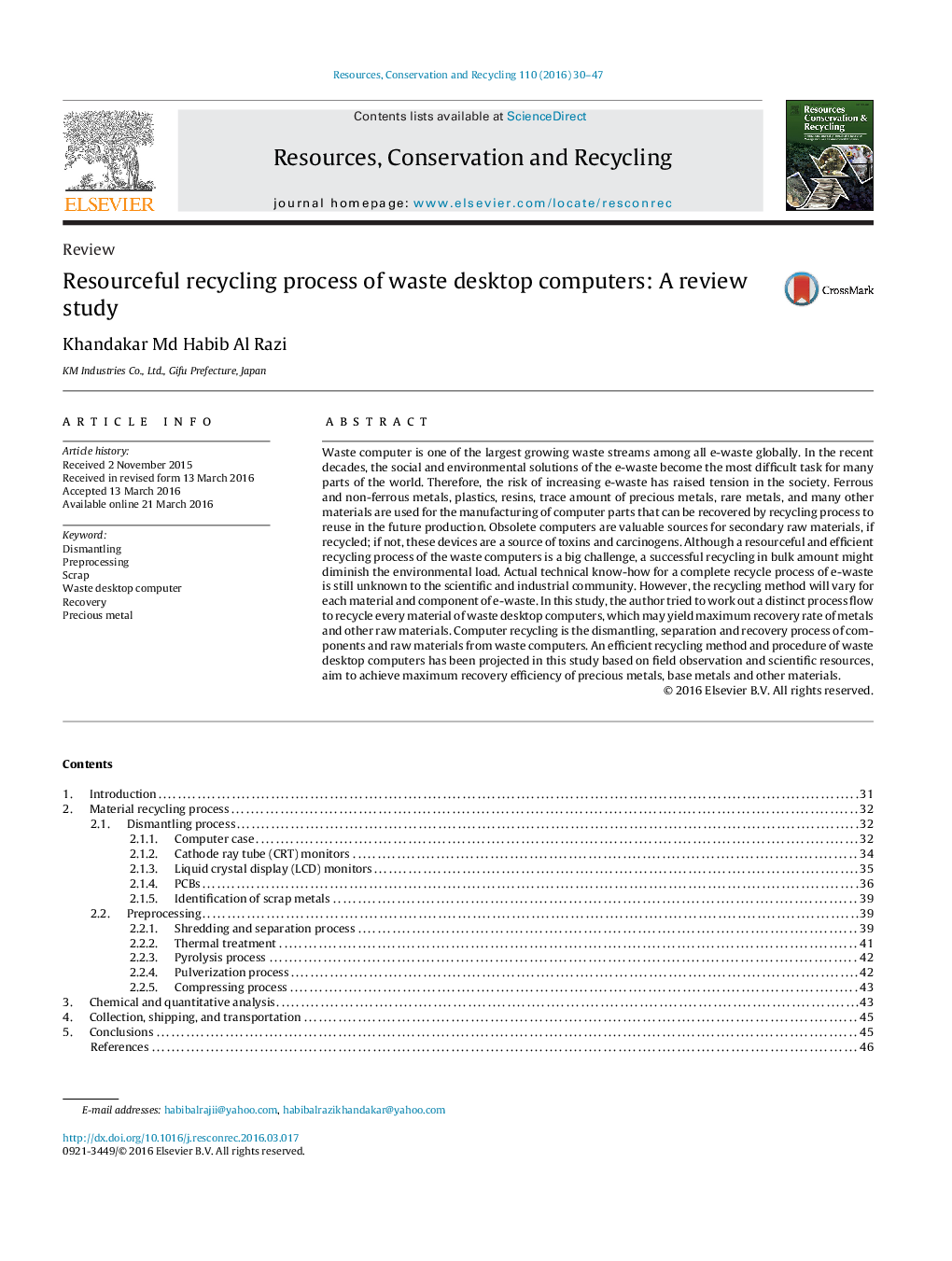| Article ID | Journal | Published Year | Pages | File Type |
|---|---|---|---|---|
| 1062700 | Resources, Conservation and Recycling | 2016 | 18 Pages |
•Extend the feasibility of waste computer recycling beyond technical and commercial value.•Inspire for urban mining and recycling business of e-waste in different parts of the world.•Reduce inverse environmental impact.•Decrease the transportation cost of e-waste and increase the recovery efficiency of materials.•Policy support for further e-waste recycling.
Waste computer is one of the largest growing waste streams among all e-waste globally. In the recent decades, the social and environmental solutions of the e-waste become the most difficult task for many parts of the world. Therefore, the risk of increasing e-waste has raised tension in the society. Ferrous and non-ferrous metals, plastics, resins, trace amount of precious metals, rare metals, and many other materials are used for the manufacturing of computer parts that can be recovered by recycling process to reuse in the future production. Obsolete computers are valuable sources for secondary raw materials, if recycled; if not, these devices are a source of toxins and carcinogens. Although a resourceful and efficient recycling process of the waste computers is a big challenge, a successful recycling in bulk amount might diminish the environmental load. Actual technical know-how for a complete recycle process of e-waste is still unknown to the scientific and industrial community. However, the recycling method will vary for each material and component of e-waste. In this study, the author tried to work out a distinct process flow to recycle every material of waste desktop computers, which may yield maximum recovery rate of metals and other raw materials. Computer recycling is the dismantling, separation and recovery process of components and raw materials from waste computers. An efficient recycling method and procedure of waste desktop computers has been projected in this study based on field observation and scientific resources, aim to achieve maximum recovery efficiency of precious metals, base metals and other materials.
